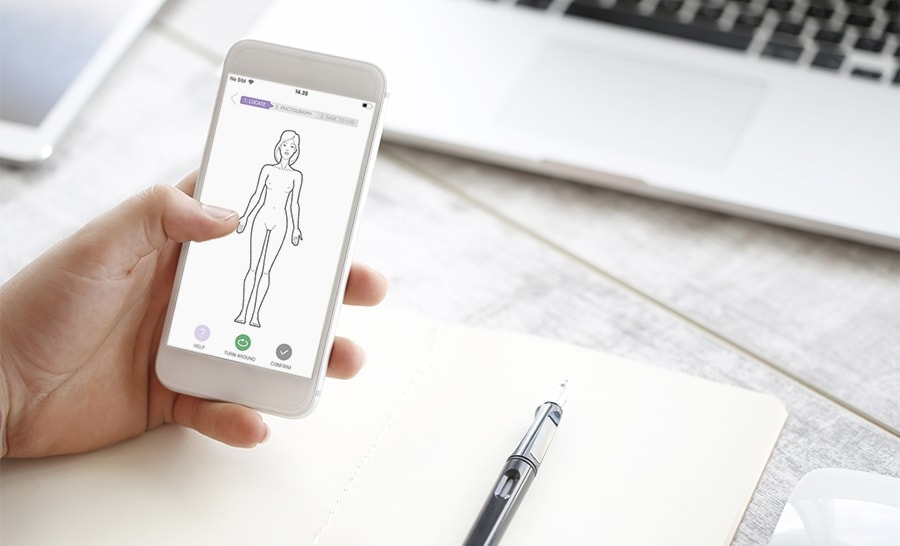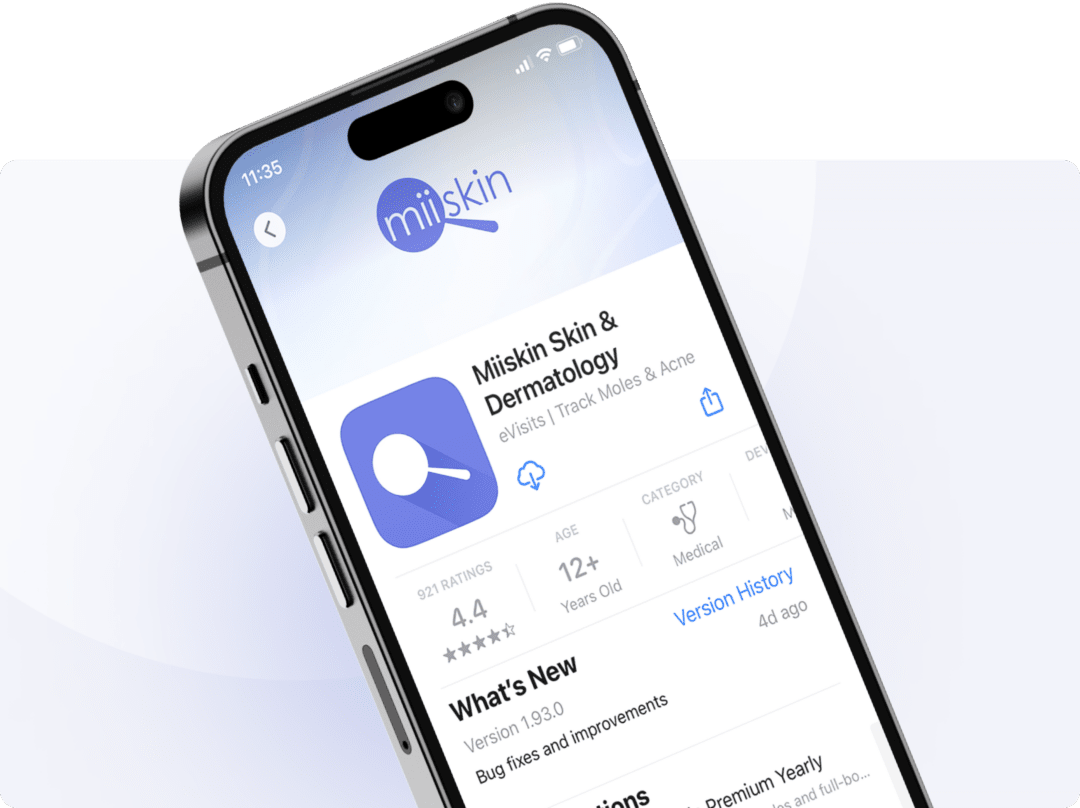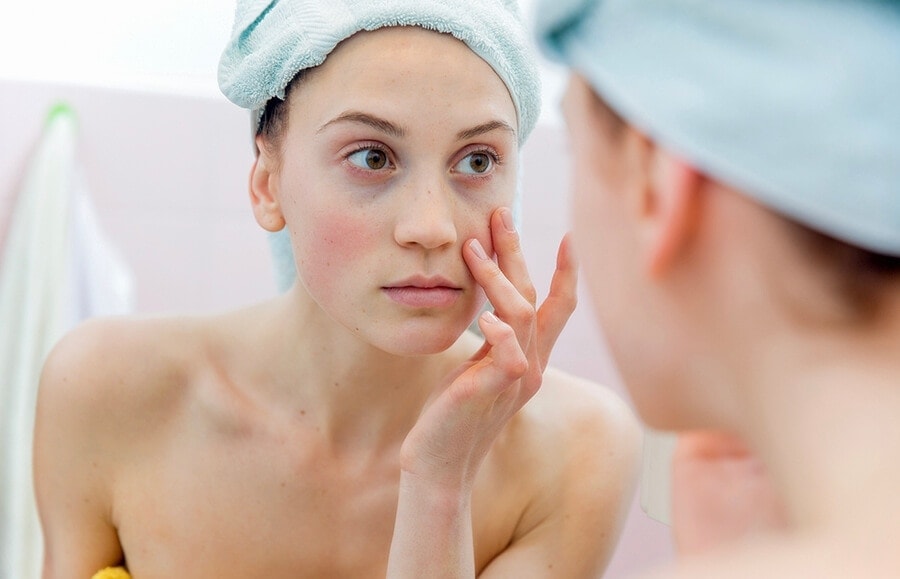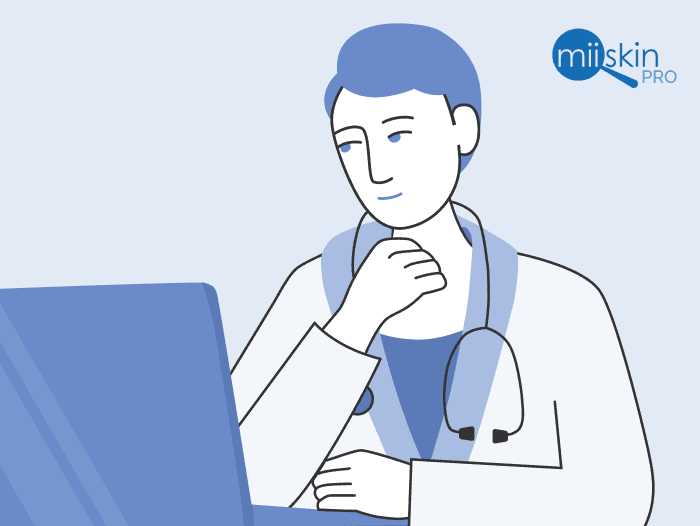Mole Mapping Guide: Everything You Need to Know
If you are at higher risk of skin cancer you may wonder if mole mapping, either clinical or with an app, would be helpful to you.
This Mole Map guide covers:
- What is Mole Mapping?
- What Are the Benefits of a Mole Map?
- How Much Does Mole Mapping Cost and What to Expect?
- Should You Get a Mole Map?
- Can You “Mole Map” Yourself with Your Phone?
What is Mole Mapping?
Mole mapping (body mole map/molemap) is a clinical process, where a nurse or doctor uses a purpose-built device to digitally photograph skin moles and other lesions.

The photos taken are often in high resolution, which lets a trained professional such as a dermatologist get a magnified view of a mole or mark on the skin. Specialised lighting may help the professional see additional structures in the lesion.
The digital mole map photos can then be stored for later viewing to see if any moles or marks have changed.
What Are the Benefits of a Mole Map?
Skin cancers, including melanoma, are difficult to diagnose. A change in a lesion is an important sign that the lesion should be examined further.
Mole Mapping benefits:
- Provides a documented history of your moles and lesions.
- Can be helpful in determining skin changes based on the previous record.
- Critical lesions could be removed at an earlier stage based on the recommendation from a dermatologist.
- Dermoscopy photos (magnified digital photos), often used in mole mapping, provide more information for the trained professional than regular digital photos.
- If mole mapping is done as part of a full-body medical skin examination, it may be possible for some concerning lesions to be identified even if the patient didn’t think they were suspicious.

A mole map can, therefore, help a professional document the history of your moles and lesions to see if any lesions change in the future. So in essence, this photographic record helps remove some worries about missing any future skin changes.
The procedure may also help reduce scars from having moles removed preemptively, as they can be closely monitored instead. That said, it is important that you always get any lesion removed if your physician recommends that course of action.
A mole map procedure is often performed as part of a full-body clinical skin examination as many lesions that don’t catch the attention of a patient may trigger the concern of a healthcare professional.
Magnified digital photography, also known as digital dermoscopy, is often used in mole mapping procedures.
Dermoscopy photos contain a lot more information than normal digital photos, which can help a dermatologist assess moles without seeing the patient in person. This may increase the assessment efficiency of a dermatologist or another skin cancer trained professional in that they can assess more lesions in this manner.

If you contact a mole map provider, be sure to ask if any specialist is reviewing the magnified mole map photos.
After your initial mole map, you may be recommended to regularly get your moles mapped in the clinic to catch any changes over time. As these check-ups will require work from at least a specialised nurse, there are recurrent costs involved with ongoing visits to a clinic.
When thinking about getting your moles mapped, it’s important to be aware of the following:
- Over 70% of melanomas in adults appear as new moles or marks on the skin, rather than as changes to existing lesions.
- Don’t just keep an eye on moles, freckles and other marks that are mapped in the clinic.
- If you are over 35 years old, it is less common to develop new moles, and you should be aware of any new lesions.
How Much Does Mole Mapping Cost and What to Expect?
Mole mapping is often conducted by a nurse specialised in mole mapping. In many clinics the process is overseen by a dermatologist or a skin cancer trained doctor, who will take clinical responsibility. If there is a doctor involved, the costs will be higher as you will get a further assessment of your moles.

The cost of the procedure will depend on whether you are just looking to get one lesion checked or if you are looking to get many moles mapped. Repeat-visits may come at a discount in comparison to a first-time visit.
All things taken into account, the procedure normally costs between US$150 – US$350.
Mole mapping is usually not covered by universal healthcare systems such as the NHS in the UK, bulk-billing in Australia or your insurance plan if you are in the US. If you are in doubt you can of course check with the clinic to find out if any costs are covered.
Examples of clinics in the UK that offer mole mapping:
- The Cadogan Clinic
- Centennial Medical Care
Who Should Get a Mole Map?
There are no official guidelines as to who should get their moles mapped. It may come down to financial considerations as it does require a small investment to get a mole map.
However, those at a high-risk of melanoma due to a family history or who have used tanning beds extensively may consider making the investment – especially those who have too many moles to keep track of.
Mole mapping could be recommended for individuals who have:
- Large number of moles (more than 50)
- Moles that are large, or have an unusual colour or shape
- Previous history of melanoma
- A strong family history of melanoma
- Pale skin that burns easily in the sun
- Episodes of previous severe sunburn
- A lot of sun exposure, including outdoor workers and people who take regular sun holidays
- A suppressed immune system
- Moles on the back, which may be difficult to keep an eye on
- Any recent changes to individual moles
Please consider that the normal first-stop with any health concern is your family physician. If you are in doubt, you can ask your GP or dermatologist for advice on whether mole mapping would be of benefit to you.
Read more about different types of moles and learn about the difference between normal benign moles (nevi) and irregular atypical moles (dysplastic nevi).
Consult a Board-Certified Dermatologist Now!

Download the Miiskin app to connect with independent, board-certified dermatologists who are licensed in your state. Answer a few questions, upload some photos and get a treatment plan in 1-2 days. Consultation price is $59 and medication renewals are only $39.
Online dermatology care is ideal for chronic dermatology conditions.
Read more
Frequently Asked Questions



